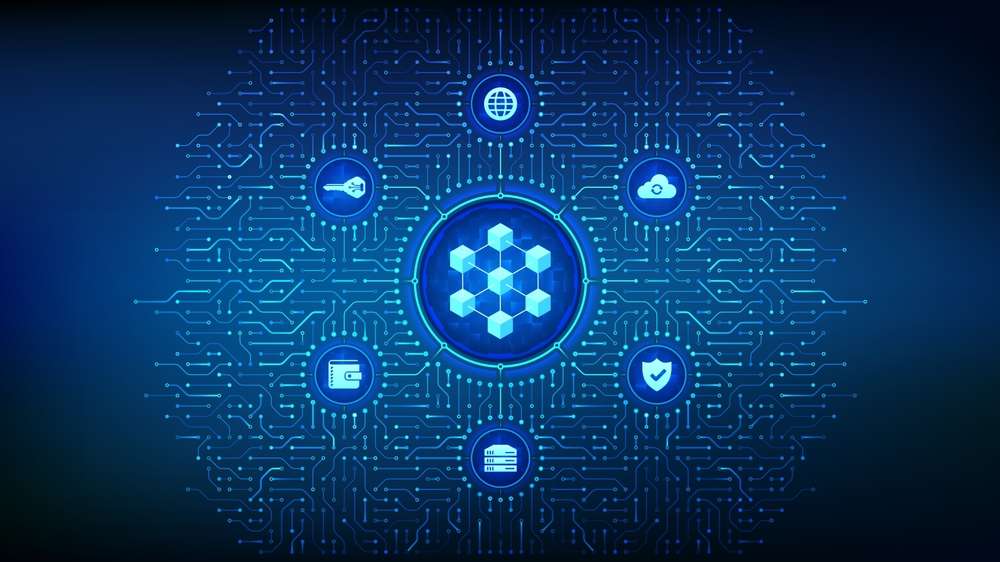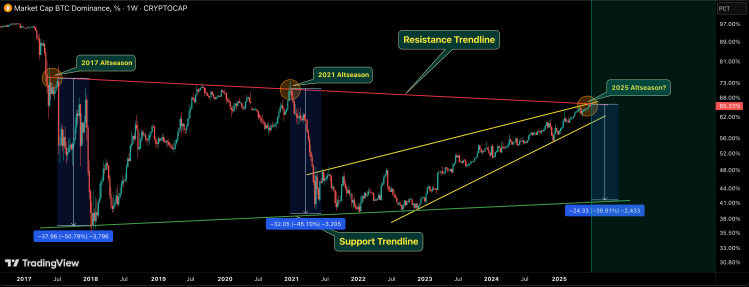
Understanding DePIN: The Future of Decentralized Infrastructure in the Real World
In order to decentralize infrastructure in the real world, where people contribute physical infrastructure resources across industries, including transportation, electricity, and wireless communication, DePIN (Decentralized Physical Infrastructure Networks) uses blockchains and token incentives.
A network of resources for millions of people is created by a number of centralized digital platforms that harness the power of the community. Uber and other ride-sharing services are a few examples. Uber drivers provide financial support in exchange for their physical resources (vehicles) and labor (chauffeuring), with the platform facilitating the accessibility of these services to a large customer base.
Such centralized solutions entice providers while retaining control over their resources (at least while they are active on the platform) through the use of fiat-based rewards or volunteer benefits like increased exposure. As with users, providers must follow certain procedures in order to become members.
Blockchain-driven initiatives are creating fixes and enhancements for this system. Such projects assert that they give providers an improved means of engaging in the supply of public services, as well as flexible and increased compensation for these activities. These initiatives, dubbed DePIN, have the potential to revolutionize the service-based industry in the future.
Knowing Cryptocurrency’s Decentralized Physical Infrastructure Networks (DePIN)
DePIN is essentially the above-described system in a decentralized form. Decentralized Physical Infrastructure Network is what it stands for. A DePIN is a network of crowdsourced providers that uses a public ledger, or blockchain, to record the services provided to users and receive payment for those services in the form of cryptocurrencies that operate on the same or a different blockchain network.
The blockchain serves as an administrative, remittance, and record-keeping tool for DePINs. As an administrative tool, DePINs employ the blockchain to create a permissionless system for users and providers. Anyone with the necessary resources may offer the needed services. As a remittance facility, suppliers are paid in cryptocurrencies while customers access the services using blockchain-powered solutions. Every activity is documented in detail on the ledger, which serves as a record-keeping tool and is often accessible to the public.
DePINs have several uses. Their use spans across industries, from sophisticated infrastructure markets that run entirely on the blockchain to crowdsourced location-based services.
Types of DePIN
DePINs are divided into two main groups:
- Physical Resources Networks (PRNs)
- Digital Resources Networks (DRNs).
Physical resource networks (PRNs) are decentralized networks based on location. In order to provide services, network providers contribute hardware resources pertaining to connection, mobility, energy, and associated industries. These resources are location-based and non-fungible in that the services they provide are sometimes non-portable (fixed to a certain area) and localized (set to a place).
Networks of fungible digital resource providers are known as DRNs. Providers provide resources such as pooled bandwidth, processing power, and storage facilities. These resources don’t have a location or anything to do with location information.
DePIN is pushing the envelope and establishing a previously unheard-of connection between blockchain technology and the physical world. This is the fundamental mechanism of this.
How do You Use a DePIN?
DePIN establishes a link between the blockchain and real locations. To put it simply, the main participants are a provider-controlled physical facility, middleware that connects the facility to the blockchain, and a public ledger that oversees the remittance relationship. This is how it operates in detail:
- Physical Infrastructure:This might include everything from solar panels to internet routers to sensors. This is overseen by a private company. Before taking part in the DePIN initiative, these suppliers occasionally already had certain facilities. Consider a blockchain network using Proof of Work (PoW), in which miners provide processing power to stave off attacks. The facilities of as many private suppliers can be added to a DePIN as feasible.
- Middleware:The majority of the connection between the physical infrastructure and the blockchain is managed by the middleware. Similar to a decentralized oracle network (DON) that relays information to a blockchain application from the outside world. The middleware serves a comparable purpose. The DePI Network receives data from the middleware on activity on each of the private facilities.
- Blockchain System:Information collected by the middleware is sent to the blockchain, which acts as a remittance system and administrator for both users and suppliers. The blockchain computes the rewards based on these activities and allocates demand among the suppliers based on data given by the middleware. Cryptocurrencies are used to send rewards. The blockchain also manages resource procurement on the user’s end, where users are quickly charged for each service they use, and pricing models are incorporated into the remittance system.
DePINs want to use incentives to expand a physically resource-efficient infrastructure. Initially, suppliers have an incentive to join a decentralized network with their actual facilities. Several providers, some of which may have these facilities idle, commit their facilities to the network in the hopes of earning incentives. These resources are made available to users via DePIN. Fees that users pay to the network provide money.
The lower service fees compared to facilities operated by corporations also draw users. The value of the native token increases as the network expands, which benefits providers by increasing incentives and attracting more investors and providers overall. As the network expands and the cycle persists, the DePIN flywheel accelerates.
Decentralized Physical Infrastructure Networks (DePIN): What are their Advantages?
These are a few benefits of DePIN, albeit they may not be all of them;
Horizontal Scalability
Facilities may expand their capabilities more freely with DePIN. Rather than expanding the capacity of each resource, networks may add more resources. This permits a significant degree of flexibility, and buildings constructed with this method may readily expand or contract in response to demand. Demands can be rationed, and resources can be made accessible through blockchain management.
Some suppliers may see a reduction in workload when there is less demand. When there is a lot of demand, the network may bring dormant resources back to life by adding new instances and raising the total capacity without causing any changes. Systems such as these can expand endlessly, depending on the latent resources that are accessible and the DePIN’s rationing scheme.
Local Governance – Decentralization
Similar to DeFi, DePIN is decentralizing infrastructure systems by transferring ownership from businesses to a group of people pooling their resources to construct a facility. This mechanism, which functions similarly to miners in a proof-of-work network, divides control of the facility among the several suppliers. In DePINs, each member of the system contributes resources and has control based on their capabilities. It’s similar to an industrial DAO. When all providers have the same capacity, the DePIN becomes a (almost) completely decentralized system.
Reasonable Costs
Comparatively speaking, DePIN pricing models differ from those of traditional facilities. The expense borne by the private providers to operate their respective facilities and other network-related considerations are elements that go into the pricing model. Since the platform itself doesn’t pay for these services, any additional fees might be lower.
Overall, it is anticipated that the DePIN pricing model will be less expensive, with the hope that the pricing will be reasonable given that it takes into account fundamental considerations without unjust price inflation, which is typically connected to establishments run by centralized organizations. DePINs are also more likely to take affordability into account in their pricing strategy than businesses because they are a human-powered system.
Economical Functioning
The DePI network requires little to no outlay of funds to operate, and its suppliers have considerable leeway in the services they offer. A provider could dedicate its space to several networks, for example. In addition, users pay a reasonable amount for the services they receive from the network. DePINs are intended to provide the finest service at the lowest feasible cost, providing an economical solution.
Without Permission
A DePIN is open to everyone to add resources to. On the user end, a DePIN provides services that are accessible to everybody. For each of them, there is no haggling about the cost or the level of user screening. Like anybody may deploy a liquidity pool on a DEX or easily get a loan from a money market, a provider can run a provider-side account on a DePIN once they have the necessary infrastructure.
Motivation
DePINs benefit greatly from the use of incentives. Depending on how the DePIN functions, the providers might provide a passive or active revenue potential. Additionally, people can create a primary source of income using DePINs. Through its AI-powered marketplace for computing power, projects like Nunet aim to lower the number of idle computer resources. Providers receive revenue from their facilities, which were previously going to remain idle.
What Problems does DePIN face?
DePIN is a new idea that has shown potential on paper and in early prototypes, but a few things might prevent it from progressing further. These things include:
Stage of Adoption and Effect on Income
The DePIN flywheel is reliant on the network’s development, which affects the token’s worth and the desire of providers and investors to join the network. DePIN is still in its infancy, and the majority of facility owners and blockchain aficionados are not yet interested in becoming a part of these systems. The DePIN idea confronts a big issue in creating a system that draws in enough suppliers and users to fuel the network and the flywheel. However, this is probably going to alter in the future.
Complications with Technology
The idea of DePIN could be difficult to understand. The technical aspects may seem intimidating to enthusiasts who want to work in this field, at least initially. Projects in this field will require more effort to educate people at various levels.
Operating Expenses for Private Facilities
Certain facilities might have substantial expenditures associated with everyday operations. Some providers may find this difficult since private settings are less likely to receive outside funding.
Turnover
A DePIN must be lucrative enough to be able to remit incentives at least equivalent to its operating costs in order to draw in providers. The attraction is closely correlated with each operating cycle’s percentage profit. DePINs may find it difficult to dispense alluring incentives at this point since the density of both the supplier and user sides is still low.
Endnote
DePINs illuminates facility-building in a community-based manner so everyone can participate and benefit. It democratizes software and hardware infrastructures. It illustrates the potential of communities, cryptocurrencies, and blockchain technology both theoretically and practically. Its financial benefits may not be fully realized, but thus far, it appears to be a cost-effective method of building infrastructure. This holds true for the project itself, as well as consumers and suppliers. Everyone pitches in for the project, saving the project team a significant sum of money. Depending on how much they provide, providers might receive either passive or active cash benefits. Community-based solutions are more likely to utilize a price structure that is adjusted to reflect users’ varying levels of purchasing power.
DePINs may represent the next advancement in hardware, software, and facilities at the commercial level from a technical standpoint. The current systems are incredibly centralized, and businesses control the majority of ordinary, essential facilities. DePINs have the potential to improve this situation by giving a dispersed network of consumers and providers—a kind of DAO for the industrial class—back control. Current DePIN prototypes demonstrate this. The use of cryptocurrency for incentive remittances encourages the development of more streamlined payment methods. These kinds of systems are naturally suited for cryptocurrencies.
Having said that, it is crucial to remember that even if this has demonstrated promise, there may be certain drawbacks, some of which are unknown at this time due to the product’s early stages of development. It’s also critical to remember that these systems are still in their infancy, and, like any new technology, they may undergo quick modifications, some of which may not be welcomed by users. It’s also critical to comprehend how some of these protocols relate to you as a consumer or supplier. Remember that foul players may also make use of these kinds of strategies. In general, careful personal investigation is suggested.





